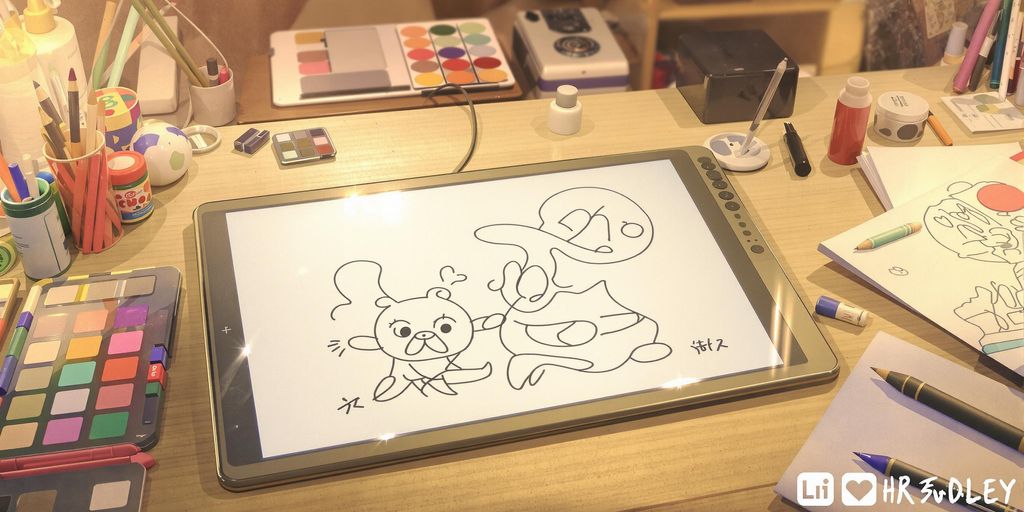Your next big career move might not come from online job searches. Instead, it could come from the professional relationships you build and care for over time. Research shows that 70-80% of jobs are never listed online. This means personal connections are key to finding these hidden opportunities.
Traditional job hunting methods often fail because they involve competing with many others. Strategic relationship-building lets you connect directly with those who make hiring decisions. It also gives you inside info on upcoming job openings. This way, your job search becomes a focused strategy rather than just a numbers game.
To succeed, you need more than just a stack of business cards from events. You must prepare well for effective networking and manage your relationships with purpose. Top professionals know that strong connections lead to ongoing mentorship, collaboration, and career growth throughout their careers.
Key Takeaways
- 70-80% of positions remain hidden from public job boards and require personal connections to access
- Strategic relationship-building outperforms traditional application methods consistently
- Meaningful professional connections provide long-term career benefits beyond immediate job searches
- Preparation and intentional follow-up separate successful networkers from casual contact collectors
- Hidden job markets become accessible through targeted relationship management strategies
- Professional relationships offer mentorship and collaboration opportunities throughout your career
The Importance of Networking for Job Opportunities
Networking opens doors to jobs that aren’t listed on job boards. Research shows that 70% of job seekers find success through networking. It’s a key skill for moving up in your career.
You get insider tips, mentorship, and direct connections to hiring managers. This is crucial for finding your next job.
The job market today values relationships as much as skills. Companies often hire through referrals before posting jobs publicly. This hidden job market is your best chance for career growth.
Understanding Networking
Networking means building mutually beneficial relationships with professionals in your field. It’s more than just collecting business cards or adding LinkedIn connections. It’s about creating real connections where both sides benefit.
You network by sharing knowledge, making referrals, or helping others. This approach builds trust and makes you a valuable contact. Real relationships are the key to successful networking.
Professional connections grow through regular contact and shared experiences. Keep in touch, celebrate others’ wins, and help when you can. This keeps your relationships strong.
Benefits of Networking
Good networking can greatly benefit your career. It opens doors to new opportunities, insights, and support systems. These can help you grow faster in your career.
| Networking Benefit | Career Impact | Long-term Value |
|---|---|---|
| Access to Hidden Jobs | 70% of positions filled through referrals | Continuous opportunity pipeline |
| Industry Insights | Early trend awareness | Strategic career positioning |
| Mentorship Opportunities | Accelerated skill development | Leadership preparation |
| Professional Referrals | Higher interview success rates | Enhanced reputation building |
Your network gives you real-time market info on salaries, company cultures, and new opportunities. This helps you make smart career choices and negotiate better.
Networking also builds support systems and accountability partnerships. You connect with people who get your challenges and can guide you through career changes.
Common Networking Myths
Many myths stop people from seeing networking as a career strategy. These myths can hold you back from growing professionally.
Myth 1: Networking is only for extroverts. Introverts can be great at networking because they listen well and build strong relationships. You can network well, no matter your personality.
Myth 2: Networking means using people. True networking is about mutual benefit and real relationships. You help others while they help you achieve your goals.
Myth 3: You only network when job searching. The best connections take time to build. You should network all the time, not just when you’re looking for a job.
Myth 4: Networking requires expensive events. You can network for free. Use online platforms, industry events, volunteer work, and professional groups to connect.
Knowing these truths helps you network with confidence and the right mindset. Successful networking takes time, honesty, and effort, not just self-promotion.
Making Connections: Where to Start
Starting to network means finding the right places where people in your field meet. It’s about using different settings to grow professionally. You need to know which ones fit your goals and make you feel comfortable.

Success in networking comes from focusing on quality over quantity. Aim for places where you can make real connections, not just collect cards. Each chance to network needs its own plan and follow-up steps.
Industry Events
Conferences, trade shows, and association meetings are great for networking. They bring together leaders, mentors, and peers in your field. These networking events are key for sharing knowledge and finding opportunities.
Before going to an event, look up the speakers and attendees. Set goals, like meeting certain people or learning about new trends. Make sure you have a good elevator pitch and lots of business cards.
Arrive early to networking sessions and stay involved in talks. Ask smart questions to show you know your stuff. Take notes and collect contacts carefully.
Reach out within 48 hours of meeting someone new. Send a personalized message about your conversation. Suggest meeting up or working together to keep the connection alive.
Online Platforms
Online networking goes beyond LinkedIn to forums, virtual conferences, and communities. These digital spaces help you connect with people worldwide without being in the same place.
Join forums for your industry to discuss challenges and trends. Share your insights instead of just promoting yourself. Post relevant articles and comment thoughtfully.
Take part in networking events and webinars online. These often have chat features and video calls to help you connect. Use video calls to build stronger relationships.
Make content that shows off your expertise. Write articles, share case studies, or do podcasts to stand out as a leader in your field.
Local Meetups
Professional groups, alumni associations, and community organizations offer local networking chances. These can lead to new career paths and lasting friendships.
Look for local chapters of national associations in your field. Go to meetings regularly to get to know people. Join committees to show your commitment and skills.
Join alumni groups from your school or old employers. These groups share experiences and often support each other’s careers. Go to alumni events and look for mentorship programs.
Also, consider meetups for industries related to yours. Marketing folks might find value in entrepreneurship meetups, while IT pros could benefit from innovation forums. These diverse connections can offer new insights and opportunities.
Leveraging Social Media for Networking
Your digital presence can be a powerful tool for networking. Social media lets you connect with industry pros, share your skills, and build lasting relationships. By using RoboApply’s AI resume builder with social media, you create a strong professional brand. This attracts the right connections and opportunities.
For successful social media networking, focus on real engagement and adding value. Instead of just collecting friends, aim to build real relationships. Do this through meaningful interactions and content sharing.
Utilizing LinkedIn
LinkedIn is the top platform for professional networking. It gives you access to industry leaders and potential employers. Make your profile stand out with a professional photo, compelling headline, and detailed summary that highlights your unique skills.
On LinkedIn, share content regularly and join in on industry discussions. Post articles, insights, and achievements to show your expertise. RoboApply’s AI resume builder ensures your LinkedIn profile matches your job search materials, creating a consistent image.
When reaching out to new connections, make your messages personal. Mention shared experiences, mutual connections, or relevant topics to boost your acceptance rate. This starts meaningful conversations.
Engaging on Twitter
Twitter is great for real-time conversations and showing your expertise. Follow industry influencers and engage with their content. Add value to discussions with thoughtful comments and retweets.
Join in on industry hashtag conversations and Twitter chats to get noticed. Share articles, news, and your insights to show you’re knowledgeable in your field.
Use Twitter’s search features to find conversations about your industry or job opportunities. This proactive approach helps you find connections and stay updated on trends.
Joining Relevant Groups
Professional groups on LinkedIn, Facebook, and other platforms offer focused networking. Join groups related to your industry, alumni networks, and professional associations. This way, you connect with like-minded professionals.
Being active in group discussions shows your expertise and builds relationships. Share insights, ask questions, and offer resources to be seen as a valuable member.
Many groups host virtual events and webinars for more networking chances. Attend these and follow up with interesting connections. Remember, successful group networking needs consistent effort, not just occasional participation.
Use RoboApply’s job tracker feature to keep track of your networking. This helps you stay organized and ensures you don’t miss any important connections.
Building Your Personal Brand
A well-crafted personal brand opens doors to opportunities before you even ask. Your personal branding strategy shapes how others see your professional value. When you have a clear brand identity, networking becomes easier and more effective.
Your personal brand tells your professional story in a memorable way. It shows your unique skills, experiences, and values. This makes every networking conversation more meaningful and impactful.

Crafting Your Elevator Pitch
Your elevator pitch is key to your personal branding efforts. It should be 30-60 seconds long and clearly show your value. It should also spark genuine interest from your listener.
Focus on the problems you solve, not just your job titles. Your pitch should include who you are, what you do, and the value you bring. This makes you more memorable and starts natural conversations.
Copy-Ready Elevator Pitch Template:
“Hi, I’m [Your Name]. I help [target audience] [achieve specific outcome] by [your unique approach/skill]. For example, I recently [specific achievement that demonstrates value]. I’m passionate about [relevant industry trend/challenge] and love connecting with professionals who [shared interest/goal]. What brings you to [event/platform] today?”
Practice your pitch until it feels natural. Adjust it based on your audience and setting. Always end with a question to start a conversation and show interest in the other person.
Creating a Professional Online Presence
Your digital footprint reinforces your personal brand across all platforms. Being consistent in messaging, visuals, and tone helps people recognize and remember you. Every online interaction should reflect your professional identity.
Start with LinkedIn as your primary professional platform. Your headline should highlight your unique value, not just your job title. Use keywords your target audience searches for, and tell your professional story compellingly in your summary.
Keep your brand consistent across all platforms. Your email signature, social media profiles, and professional websites should all reflect the same brand message and visual style.
| Platform | Key Brand Elements | Update Frequency | Primary Purpose |
|---|---|---|---|
| Professional headshot, compelling headline, detailed summary | Weekly posts, monthly profile review | Professional networking and thought leadership | |
| Consistent handle, professional bio, industry-relevant content | Daily engagement, 3-5 posts weekly | Industry conversations and trend discussions | |
| Email Signature | Name, title, contact info, professional tagline | Quarterly updates | Professional communication consistency |
| Personal Website | Portfolio, testimonials, contact information | Monthly content updates | Comprehensive professional showcase |
Share valuable content that shows your expertise and interests. Comment thoughtfully on others’ posts to show your knowledge and build relationships. Quality engagement matters more than quantity when building your personal brand online.
Regularly check your online presence. Set up Google alerts for your name to track mentions. Ensure your digital reputation remains positive. Address any inconsistencies or outdated information promptly to maintain a professional image.
Effective Communication in Networking
The key to networking is more than just collecting business cards. Effective networking communication means creating real connections. It’s about engaging in a way that adds value to both parties. This approach turns every meeting into a chance to build meaningful relationships.
Good networkers know communication is a two-way street. They share their stories and listen to others with genuine interest. This balance is the start of lasting professional relationships.
Active Listening Skills
Active listening sets great networkers apart. It means fully focusing on what others say and showing you care. True active listening goes beyond just hearing words; it’s about understanding the emotions behind them.
Start by making eye contact and using open body language. Lean in to show you’re engaged. Avoid distractions like phones or looking around. These actions show you value the conversation and respect the person.
Ask questions that show you’ve been listening. Instead of saying “That’s interesting,” ask specific questions. For example, “What challenges did you face?” or “How did that experience change your approach?”
Remember important details from your talks. Mention them in future chats. This shows you’re invested in the relationship and see them as more than just a contact.
Use the pause technique when someone finishes talking. Wait a few seconds before you respond. This lets them finish their thoughts and helps you give a thoughtful answer.
Following Up After Meetings
Your follow-up strategy is crucial for turning contacts into valuable relationships. Systematic follow-up is what sets successful networkers apart. Timing, personalization, and adding value are key.
Send your first follow-up within 24-48 hours. This keeps the conversation fresh and shows you’re professional. Waiting too long can lose momentum.
Make every follow-up personal by referencing your conversation. Mention the event, the challenge, or the recommendation. This shows you were actively listening and value the connection.
Always add value in your follow-ups. Share relevant articles, introduce useful contacts, or offer help. This makes you a resource, not just a taker.
| Follow-Up Timeline | Message Type | Key Elements | Value Addition |
|---|---|---|---|
| 24-48 Hours | Initial Connection | Personal reference, gratitude | Relevant resource or article |
| 1-2 Weeks | Value-Added Touch | Industry insight, introduction | Useful contact or opportunity |
| 1 Month | Relationship Maintenance | Check-in, project updates | Assistance offer or collaboration |
| Quarterly | Long-term Nurturing | Industry trends, achievements | Strategic partnership ideas |
Use a simple system to keep track of follow-ups. A spreadsheet or CRM can help. It ensures you stay in touch without overwhelming others.
Vary your follow-up methods to keep things interesting. Try emails, LinkedIn messages, and phone calls. Adapting to different preferences shows you’re flexible and considerate.
Building relationships is an investment for the long haul. Some connections may not offer immediate benefits but could be valuable later. Consistent, thoughtful follow-ups keep you in the running for future opportunities.
Utilizing RoboApply for Networking Success
Smart job seekers use digital tools to boost their career. They mix networking with tech to find jobs faster. RoboApply makes networking better by offering tools to organize and grow your professional network.
This platform connects old-school networking with today’s job search. It helps you keep track of every connection and chance. This way, you never miss out on a valuable opportunity.
AI Resume and Cover Letter Builder
Networking leads to job chances that need quick, professional answers. RoboApply’s AI resume and cover letter builder makes your materials perfect for these opportunities. It uses job details to customize your applications.
When contacts refer you, your applications must stand out. The AI builder adds the right keywords and formats. This makes your materials look professional and reflects well on your networkers.
The system checks grammar and optimizes for applicant tracking systems. It’s like automated job application systems, but keeps a personal touch in your networking.
Job Tracker Feature
Good job search strategies need a way to track all job leads. RoboApply’s job tracker feature helps manage referrals and follow-ups. It keeps a record of your networking efforts.
The system organizes job leads into a workflow. You can sort by referral, track conversations, and set reminders. This keeps you on top of your networking efforts.
The outreach CRM manages your professional relationships. It tracks conversations, notes, and schedules check-ins. This helps keep your networking strong over time.
Interview Coaching
Networking can lead to interviews that need special prep. RoboApply’s interview coaching tools help you shine in these situations. It offers practice and feedback to boost your performance.
It teaches you to use your networking background in interviews. The coaching helps you acknowledge referrals and show you know the company culture. This shows respect for the networking that got you the interview.
| RoboApply Feature | Networking Benefit | Key Advantage | Time Saved |
|---|---|---|---|
| AI Resume Builder | Tailored applications for referrals | ATS optimization | 2-3 hours per application |
| Job Tracker | Organized opportunity management | Referral source tracking | 5-10 hours per week |
| Interview Coaching | Relationship-aware preparation | Personalized practice sessions | 3-5 hours per interview |
| Outreach CRM | Systematic relationship management | Automated follow-up reminders | 4-6 hours per week |
These features work together to make your job search better. They turn networking into a smooth part of your job search. This approach helps you grow your career while keeping your professional network strong.
The Art of Informational Interviews
Informational interviews turn casual chats into deep career insights. They help you build strong professional ties and learn about industries and roles. Unlike regular job interviews, these focus on learning, not just selling yourself.
Many miss out on this powerful tool. Yet, informational interviews can lead to job tips and mentorship. They build real connections that help both sides.

What is an Informational Interview?
An informational interview is a chat to learn from industry experts. You ask for a short meeting to get career advice and industry trends. You’re not asking for a job directly.
These talks last 20-30 minutes. They can be face-to-face, over the phone, or via video. The aim is to build relationships and gain valuable career insights.
They work because there’s no pressure. Experts share their stories when they see you’re really interested. This can lead to stronger connections than usual networking.
How to Conduct One
First, find professionals in your dream industry or role. Use LinkedIn to find interesting career paths. Look for alumni or connections through mutual contacts.
Write a personalized message explaining why you’re interested. Mention their background that interests you. Ask for a 20-minute chat and be flexible with times.
Prepare good questions before the meeting. Ask about their career, industry insights, and advice. Avoid questions you can easily find online. Instead, ask about challenges they’ve faced and what they’ve learned.
Listen actively during the chat. Take notes and ask more questions. Remember, it’s about learning from their experience, not asking for jobs.
Send a thank-you message within 24-48 hours. Mention specific insights they shared and how you’re using their advice. This follow-up can keep the relationship growing.
Example of a Successful Informational Interview
Here’s how to ask a marketing director for career tips:
Initial Outreach Message:
Hi Sarah,
I saw your profile through Mike Johnson. Your move to digital strategy at TechCorp caught my eye. I’m exploring digital marketing and want to learn from you.
Would you have 20 minutes for a chat? I’m interested in the skills that helped you transition. I’m flexible with your schedule.
Thank you for considering my request.
Best regards,
Alex Chen
Key Interview Questions:
- What attracted you to digital marketing initially?
- Which skills proved most valuable during your transition?
- What challenges did you face moving from traditional to digital marketing?
- How do you stay current with industry changes?
- What advice would you give someone starting in digital marketing today?
Follow-up Message:
Hi Sarah,
Thanks for chatting yesterday. Your tips on data analytics were really helpful. I’m now looking into the Google Analytics certification.
I’ll keep you updated on my progress. I’d love to stay in touch as I continue my career.
Best regards,
Alex Chen
This shows how mastering informational interviews can lead to lasting connections. Sarah later referred Alex to a job at her company, showing the power of these chats.
The secret to success is genuine curiosity and following up professionally. When you’re truly interested in learning, you build strong relationships. These connections can offer ongoing guidance and opportunities in your career.
Networking Etiquette
Networking is more than just making contacts. It’s about respect, gratitude, and being professional. How you network can either build strong relationships or leave a bad impression. Knowing the etiquette helps you handle networking situations with confidence.
Your behavior at networking events shows your character and professionalism. People remember how you made them feel. Following etiquette guidelines helps you make a good impression and build meaningful connections.
Professional Guidelines and Best Practices
Always introduce yourself clearly and briefly. Say your name, role, and what you do. This makes it easier for people to remember you and see how you can help them.
Listen more than you speak. Ask questions about the other person’s work and interests. This shows you care and can help you find ways to collaborate in the future.
Respect people’s time and boundaries at events. If someone is busy, wait for a good time to talk to them. Keep conversations short and let people move on to other connections.

Don’t ask for favors or job opportunities right away. Build rapport and understand their background first. Let the relationship grow naturally before making requests.
Follow up within 48 hours after meeting someone. Send a brief, personalized message about your conversation and suggest a next step, like a coffee meeting.
Avoid common mistakes that can harm your reputation. Don’t take up too much of someone’s time. Don’t interrupt conversations without permission. And don’t push for contact information if someone is hesitant.
Expressing Appreciation and Building Relationships
Gratitude is key in networking. When someone helps you, thank them promptly and clearly. This strengthens your professional bond and encourages future help.
Send personalized thank-you messages that mention specific advice or insights. Generic messages don’t help build a strong connection. Explain how you plan to use their guidance or what actions you’re taking.
Career mentors and experienced professionals value updates on your progress. Share how their advice helped you achieve your goals or overcome challenges. This shows the value of their investment in your success.
“Networking is not about just connecting people. It’s about connecting people with people, people with ideas, and people with opportunities.”
Look for ways to give back to your network. As you grow in your career, you can help others. Share job openings, make introductions, or offer advice to newcomers.
The best networkers know that professional relationships are based on mutual support. Helping others achieve their goals can lead to them helping you when opportunities come up. This approach builds a strong foundation for long-term success.
Networking is an ongoing process, not a one-time thing. Keep in touch with your connections through occasional check-ins, sharing relevant articles, or congratulating them on their achievements. These actions keep relationships active and ready for opportunities.
Frequently Asked Questions about Networking and RoboApply
Many job seekers ask how to mix networking with modern job search tools. They want to know how to use RoboApply’s features to grow their careers. These questions cover practical tips for using RoboApply and building professional connections.
How can RoboApply help me network effectively?
RoboApply’s outreach CRM keeps your networking contacts organized. It tracks your efforts to build relationships. This way, you can follow up on important connections without missing a beat.
The platform ensures you stay in touch with industry pros. This is key for finding new career opportunities.
Can RoboApply assist with my resume for networking events?
Yes, RoboApply’s AI resume builder makes resumes for networking events. It tailors your resume for specific industry events. This way, you can focus on the right experience for each event.
This makes your networking talks more relevant and effective.
What features of RoboApply are best for job searching?
The job tracker in RoboApply helps you manage referrals from your network. The auto-apply Chrome extension makes applying to jobs easy. It uses your networking finds.
The interview coach prepares you for interviews from referrals. This turns your networking into a structured career plan. It supports both external and internal networking.
FAQ
How can RoboApply help me network effectively?
RoboApply turns your networking into a system you can track. It helps you keep in touch with your contacts by organizing them with job leads. This way, you build real connections, not just collect business cards.
Can RoboApply assist with my resume for networking events?
Yes, RoboApply’s AI makes resumes for networking events. It highlights your relevant experience for each event. This makes you stand out and increases chances for meaningful conversations.
What features of RoboApply are best for job searching through networking?
RoboApply’s job tracker is great for managing referrals. Its auto-apply Chrome extension makes applying easy. The AI helps your application materials match the job. It also keeps you in touch with mentors for ongoing support.
How do I overcome networking anxiety as an introvert?
You don’t have to be outgoing to network well. Start with smaller events where you can have meaningful conversations. Prepare by learning about others, not just promoting yourself. LinkedIn can help you build relationships before meeting in person.
What’s the difference between networking and informational interviews?
Networking is about building professional relationships anywhere. Informational interviews are focused conversations for career insights. Both are good for job searching, but interviews give deeper insights and build stronger relationships.
How often should I follow up with networking contacts?
Follow up within 24-48 hours with a personalized message. For ongoing relationships, reach out every 3-6 months. Provide value in your interactions, not just ask for help. Quality and consistency are more important than how often you contact them.
Can networking really help me find jobs that aren’t advertised?
Yes, networking is key for finding hidden job opportunities. It’s how companies often find their best candidates. Your network can alert you to jobs before they’re advertised, giving you an edge.
How do I network effectively at virtual events?
Virtual networking requires more effort but offers unique benefits. Engage in chat discussions and use breakout rooms for deeper talks. Follow up with LinkedIn requests that reference your virtual interactions. Be as authentic online as you would in person.
What should I include in my LinkedIn networking messages?
Personalize your LinkedIn messages by mentioning how you found the person and common interests. Clearly state why you want to connect. Avoid generic requests and focus on building a real relationship.
How do I maintain professional relationships long-term?
Keep in touch by sharing industry articles and congratulating on achievements. Offer your expertise when needed. Remember their career goals and check in periodically. The strongest relationships are built on mutual support and interest in each other’s success.


















